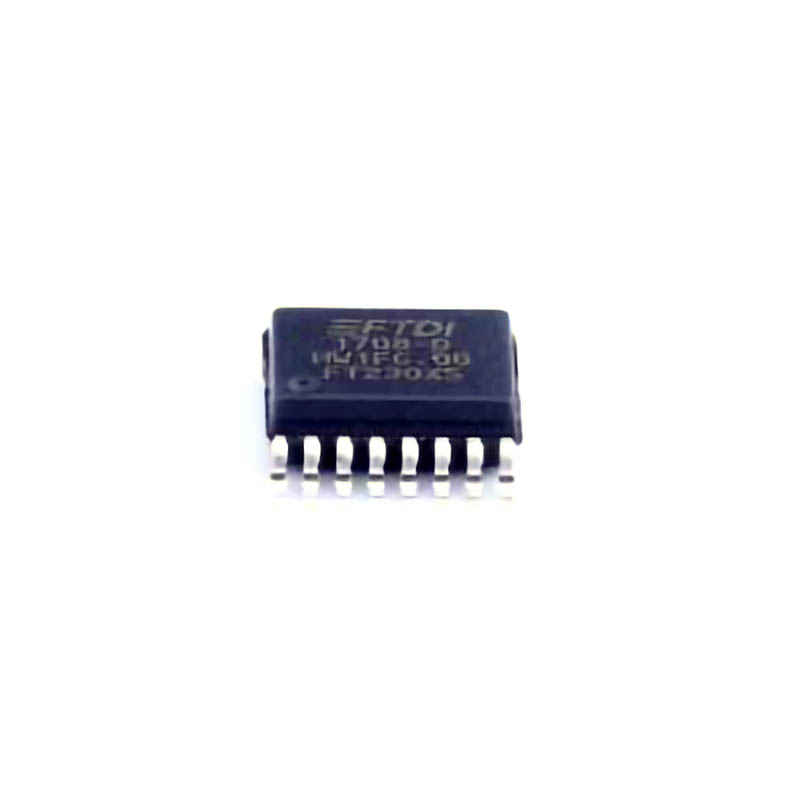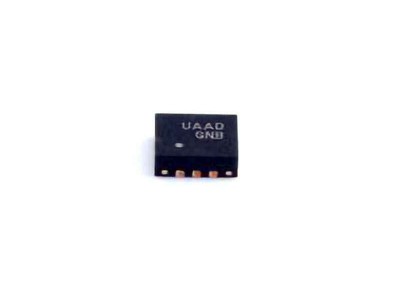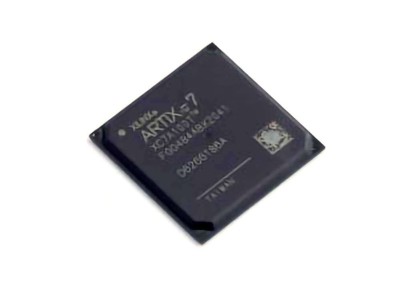
Common Issues with the FT230XS-R and How to Fix Them
The FT230XS-R USB to UART bridge is widely used in embedded systems and industrial applications, providing a simple and reliable method for connecting UART devices to computers or microcontrollers. However, like all electronic components, it is not immune to problems. In this section, we will look at some of the most common issues users encounter with the FT230XS-R and provide practical solutions to address them.
1. Driver Installation Problems
One of the most frequent issues users face with the FT230XS-R is driver installation. The FTDI Drivers are critical for the FT230XS-R to work properly, as they allow your computer's operating system to recognize the device and communicate with it.
Solution:
Ensure that you are using the latest Drivers from the FTDI website (https://www.ftdichip.com/Drivers/VCP.htm). Sometimes, Windows or other operating systems may fail to install the correct driver automatically. In such cases:
Windows: Use the Device Manager to uninstall any existing FTDI drivers and reinstall them. If automatic installation fails, manually install the downloaded driver package.
macOS: For macOS users, ensure that the correct driver is installed by checking the system preferences and looking for the FTDI USB Serial Driver. You might need to disable System Integrity Protection (SIP) for certain macOS versions to install the driver.
Linux: On Linux systems, FTDI drivers should be part of the standard kernel, but it’s always good to ensure you have the latest version. If needed, you can also install the drivers through your distribution’s package manager.
2. Device Not Recognized by the Host System
Another common issue is when the FT230XS-R is not recognized by the host system. This can happen if the device is not properly connected or if there is a conflict with other devices or drivers.
Solution:
First, verify that the FT230XS-R is properly connected to the USB port and that the cable is not damaged. Test the connection with a different USB cable or port if necessary.
Check the Device Manager (Windows) or System Information (macOS) to see if the FT230XS-R appears under the "Ports (COM & LPT)" or "USB" section. If it doesn’t appear, there might be a hardware issue, or the device may not be Power ed.
If there is a conflict with other devices, unplug other USB devices to see if that resolves the issue.
Sometimes, simply restarting your computer or device may solve this problem.
3. Inconsistent or Unstable Serial Communication
Users may encounter situations where the FT230XS-R appears to work intermittently, with unstable or unreliable serial communication. This can be frustrating, especially when data integrity is critical.
Solution:
Check baud rate and settings: Ensure that the baud rate, data bits, parity, and stop bits are configured correctly for both the FT230XS-R and the connected device. Mismatched communication settings can cause data loss or corruption.
Update the drivers: In some cases, outdated drivers can cause communication instability. Ensure that you have the latest FTDI drivers installed.
USB port interference: Some USB ports, especially those on older computers, may not provide a stable connection. Try connecting the FT230XS-R to a different USB port, preferably one directly on the computer instead of a USB hub.
4. No Data Transfer
When using the FT230XS-R for serial data communication, users might experience situations where no data is transferred at all. This issue is commonly seen when there's a misconfiguration between the FT230XS-R and the connected device.
Solution:
Double-check that the FT230XS-R is powered and properly connected to the host system.
Verify that the serial port configuration (e.g., baud rate, flow control, etc.) is identical between the FT230XS-R and the device it's communicating with.
Check for flow control issues. If hardware flow control is required (CTS/RTS or DTR/DSR), ensure the FT230XS-R is configured to support it. Alternatively, disable flow control if not needed.
Test the FT230XS-R with another known-good serial device to rule out hardware failure.
5. FT230XS-R Appears as a Generic USB Device
Occasionally, users may find that the FT230XS-R is detected as a "Generic USB Device" by their computer, which can cause it not to function properly.
Solution:
This usually happens when the proper drivers are not installed or if there was an issue during installation. Reinstalling the FTDI VCP (Virtual COM Port) driver should solve this issue.
If you are on Windows, navigate to Device Manager, find the device listed under “Other Devices” or “Unknown Devices,” right-click on it, and select Update Driver. Then, manually point to the FTDI driver folder.
Advanced FT230XS-R Troubleshooting and Solutions
While basic troubleshooting methods can resolve many issues with the FT230XS-R, some problems may require more advanced solutions. In this section, we will explore some of these more complex scenarios and discuss how to resolve them.
1. FT230XS-R Not Working After Firmware Update
A firmware update can occasionally cause issues with the FT230XS-R, including failure to communicate with the connected host system or other unexpected behaviors. This can be caused by a corrupted firmware update or incompatibility between the new firmware and your host system.
Solution:
Rollback the firmware: If you suspect the firmware update caused the issue, you can roll back to the previous firmware version using FTDI’s FT_PROG utility. This tool allows you to reprogram the FT230XS-R’s EEPROM, including its firmware.
Reinstall drivers: After a firmware update, you may need to reinstall the FTDI drivers to ensure compatibility with the new firmware.
2. FT230XS-R Not Recognizing Specific Baud Rates
Sometimes users may encounter issues with the FT230XS-R not accepting or communicating at certain baud rates. This could be due to limitations in the USB-to-UART conversion or improper configuration.
Solution:
Check the baud rate limits: The FT230XS-R supports a wide range of baud rates, but certain rates might not be reliable depending on the USB controller or the operating system. Typically, baud rates ranging from 1200 to 921600 bps should work fine.
Use a different baud rate: If you encounter issues at a particular baud rate, try reducing or increasing the baud rate in small increments to see if that resolves the issue.
Use FTPROG: FTDI’s FTPROG utility allows you to check and configure the FT230XS-R’s internal EEPROM, including baud rate options.
3. FT230XS-R Locking Up or Freezing
In some cases, the FT230XS-R may become unresponsive or freeze during operation. This could be caused by software issues, hardware conflicts, or an unstable USB connection.
Solution:
Power cycle the device: Unplug the FT230XS-R and reinsert it into the USB port. If you’re using a USB hub, connect the device directly to the computer’s USB port to eliminate any issues with the hub.
Update your operating system: Ensure that your operating system is up to date. Sometimes, USB communication issues are related to system updates or changes in USB drivers that may conflict with the FTDI drivers.
Disable USB selective suspend: On some systems, USB selective suspend can cause the FT230XS-R to freeze or lock up. Disabling this feature in the power management settings of your computer may resolve the issue.
4. Incompatible with USB 3.0 Ports
Occasionally, users report issues when connecting the FT230XS-R to a USB 3.0 port. While USB 3.0 ports are backward compatible with USB 2.0 devices, certain devices may still experience issues due to the higher data transfer rates or power requirements of USB 3.0.
Solution:
Try a USB 2.0 port: If possible, connect the FT230XS-R to a USB 2.0 port instead of a USB 3.0 port. USB 2.0 ports are often more stable for older USB devices.
Update drivers: Ensure that you have the latest FTDI drivers installed. FTDI’s newer drivers tend to improve compatibility with USB 3.0 ports.
5. Contacting FTDI Support
If you’ve tried all the solutions above and your FT230XS-R still isn’t functioning as expected, it might be time to contact FTDI support for further assistance. FTDI offers detailed troubleshooting guides and can provide personalized help if your device is defective or malfunctioning.
Solution:
Submit a support ticket: Visit the FTDI website and submit a support ticket with detailed information about your issue. Include your system specifications, driver version, and a description of the problem.
Warranty claims: If your FT230XS-R is still under warranty and has developed a hardware fault, FTDI may offer a replacement.
By following these troubleshooting steps, you can resolve most issues with the FT230XS-R and ensure that your USB-to-UART communications are seamless and reliable. Whether you're working on a project involving serial communication, embedded systems, or industrial automation, these solutions will help you get the most out of your FT230XS-R device.
If you are looking for more information on commonly used Electronic Components Models or about Electronic Components Product Catalog datasheets, compile all purchasing and CAD information into one place.


